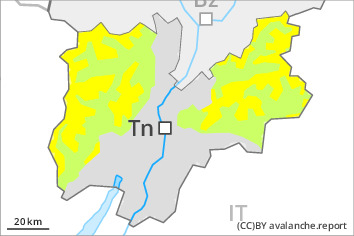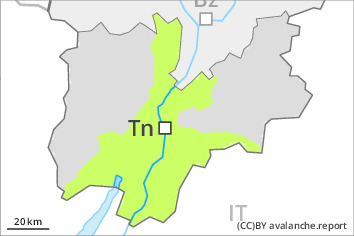
Danger level
 | 2200m |
|  |
|  |

The conditions are generally favourable. Fresh wind slabs require caution.
As a consequence of snowfall and the strong wind, fresh snow drift accumulations formed. These are prone to triggering at elevated altitudes. Caution is to be exercised in particular adjacent to ridgelines in gullies and bowls, and behind abrupt changes in the terrain above approximately 2200 m. These avalanche prone locations are easy to recognise. In addition some mostly small gliding avalanches are possible, especially in steep rocky terrain, and on steep grassy slopes below approximately 2300 m.
Snowpack
dp.6: cold, loose snow and wind
Over a wide area over a wide area 10 to 20 cm of snow, and even more in some localities, has fallen above approximately 1000 m. The wind was moderate to strong in some localities. Snow depths vary greatly above the tree line, depending on the infuence of the wind. The fresh wind slabs are poorly bonded with the old snowpack at elevated altitudes. The fresh wind slabs can in some cases be released easily.
Towards its base, the snowpack is faceted.
Tendency
Fresh wind slabs require caution.


